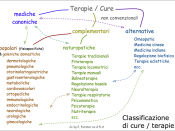The Behavioral approach to therapy has several types of therapies, these include Covert Sensitization and Flooding. Covert sensitization is a process whereby the a client is taught to associate an undesirable behavior with unpleasant sensations, the main aim being to decrease desire for the negative behavior such that the client avoids the same scenario in the future (Cautella & Kearney, 1986). When covert sensitization is employed, the client is asked to imagine a target maladaptive behavior and then imagine an aversive consequence such as vomiting or being disgraced. The term covert in very much informative in describing the characteristics of this therapy. It is directly the opposite of overt meaning something not seen, hence the therapy emphasizes the use of imaginations on the part of the client. This therapy is based on the insights of the learning theory (Cautella & Kearney, 1993). Also to be mentioned is another behavioral type of therapy called Flooding.
The underlying theory behind flooding is that a phobia is a learned fear and needs to be unlearned by exposure to the thing that one fears (Davison, 1974). Basically there are two types of flooding namely in vivo and imaginary. In vivo is a Latin word which means 'real thing' rather than just imagining things. The other one looks at imagining things rather than real life events, thus it is less aversive. Therefore this discussion seeks to highlight how each of these behavioral therapies can be applied in treating clients with maladaptive behaviors with the aid of relevant and practical examples.
Covert sensitization was first described in mid 1960s by psychologist Joseph Cautella as a new treatment for people who engage into maladaptive behaviors. It is an imaginary based procedure, the client does not have to engage in the behavior but only to imagine the behavior...


